Content
Tanya F1 is a variety bred by Dutch breeders. These tomatoes are grown mainly in open ground, but in cold regions they are additionally covered with film or planted in a greenhouse.
The variety is characterized by mid-early ripening; its compact size makes it easier to care for plantings. Before planting, prepare the seeds and soil.
Description of the variety
The description and characteristics of the Tanya tomato variety are as follows:
- determinate type of bush;
- plant height up to 60 cm;
- not a spreading bush;
- large leaves of rich green color;
- mid-season variety;
- 110 days pass from the emergence of seedlings to the harvesting of fruits.
The fruits of the Tanya variety have a number of features:
- average weight 150-170 g;
- round form;
- bright red color;
- high density;
- 4-5 tomatoes are formed on one brush;
- the first brush is formed over the 6th sheet;
- subsequent inflorescences are formed after 1-2 leaves;
- high content of dry matter and sugar.
Productivity of the variety
Despite its compact size, one bush of the Tanya variety produces from 4.5 to 5.3 kg of fruit. Harvested tomatoes can be stored fresh and transported over long distances.
According to the description and characteristics of the variety, Tanya tomatoes are suitable for home canning. They are pickled and salted whole or cut into pieces. After heat treatment, tomatoes retain their shape. Fresh fruits of the Tanya variety are added to salads and processed into paste and juice.
Boarding order
Tomato Tanya is grown by obtaining seedlings. Young plants are transferred to a greenhouse, greenhouse or open ground. To obtain maximum yield, it is recommended to plant tomatoes in a greenhouse. Tomatoes can be planted outdoors only in favorable climatic conditions.
Obtaining seedlings
Soil is prepared for seedlings, consisting of equal amounts of turf soil and humus. It is allowed to use purchased land intended specifically for tomatoes and other vegetable crops.
Two weeks before work, the soil is subjected to heat treatment. To do this, place it in the microwave or oven and heat it for 15 minutes. It is especially important to prepare garden soil in this way.
An effective way to treat seeds of the Tanya variety is to use a saline solution. Add 1 g of salt to 100 ml of water and place the seed in the liquid for a day.
The boxes are filled with prepared soil, then furrows are made to a depth of 1 cm. Seeds are placed in them, keeping a gap of 2-3 cm. You need to pour a little soil on top, and then water the plantings.
The germination of seeds of the Tanya variety increases at an ambient temperature of 25-30 degrees. Under such conditions, seed germination begins on day 2-3.
When sprouts appear, the containers are transferred to a place where there is access to light for 12 hours. If necessary, phytolamps are installed. Plantings need to be watered when the soil dries out. It is best to use warm water for irrigation.
Transplanting into a greenhouse
Tomatoes of the Tanya variety are transferred to the greenhouse 1.5-2 months after planting. By this time, the seedlings have a height of 20 cm, several leaves and a developed root system.
Tomatoes are planted in a polycarbonate or glass greenhouse. The soil for tomatoes is dug up in the fall. It is recommended to remove the top layer of soil to avoid the spread of diseases and pests in the spring.
You can fertilize the soil with humus or compost, superphosphate and potassium sulfide. Mineral fertilizers are applied in an amount of 20 g per square meter.
A hole 20 cm deep is prepared for planting. Tomatoes of the Tanya variety are placed in rows at a distance of 0.7 m. 0.5 m is left between plants.
Another option is to plant tomatoes in a checkerboard pattern. Then two rows are formed at a distance of 0.5 m from each other.
The root system is covered with soil and compacted slightly. Abundant watering is required.
Planting in open ground
Growing tomatoes outdoors is not always justified, especially in cold summers and frequent rains. In the southern regions, tomatoes can be planted in open ground. The place should be illuminated by the sun and protected from the wind.
Tomato Tanya is transferred to the beds when the soil and air have warmed up well and the danger of spring frosts has passed. Dig up the soil and add humus in the fall. In the spring, it is enough to perform deep loosening.
For planting, make shallow holes in which the root system of the plants should fit. Then it is covered with earth and compacted a little. The final stage of transplantation is watering the tomatoes.
Tomato care
The Tanya variety is quite unpretentious in care. For normal development, they require watering and periodic feeding. To increase the stability of the bush, it is tied to a support. The Tanya variety does not require pinching. Plants do not take up much space on the site, which greatly simplifies their care.
As reviews show, tomato Tanya F1 rarely gets sick. If agricultural practices are followed, the variety is not susceptible to diseases and pest attacks. For prevention, plantings are sprayed with a solution of Fitosporin.
Watering plants
The Tanya variety gives a good harvest with moderate watering. Lack of moisture causes leaves to curl and ovaries to fall off. Its excess also negatively affects plants: growth slows down and fungal diseases develop.
One bush requires 3-5 liters of water. On average, tomatoes are watered once or twice a week. After planting, the next watering is carried out after 10 days. In the future, they are guided by weather conditions and the condition of the soil in the greenhouse or in an open garden bed. The soil should remain 90% moist.
Work is carried out in the morning or evening hours, when there is no direct exposure to the sun.Water should not get on the stems or tops of tomatoes; it is applied strictly at the root.
After watering, it is recommended to loosen the soil. As a result, soil breathability improves and plants absorb nutrients better. Mulching the soil with straw, compost or peat will help prevent moisture evaporation.
Fertilizer application
During the season, the Tanya variety is fed several times. After planting, 2 weeks should pass before the first feeding. During this time, the plant adapts to new conditions.
Tomatoes are fed every week. It is best to use fertilizers based on phosphorus and potassium. Phosphorus stimulates plant development, accelerates their metabolism and improves immunity. It is applied in the form of superphosphate, which is embedded in the soil. Up to 30 g of substance is taken per square meter.
Potassium improves the taste of fruits. Potassium sulfate is chosen for tomatoes. 40 g of fertilizer is dissolved in 10 liters of water, after which it is applied under the root.
Among the folk remedies, fertilizing tomatoes with ash is suitable. It is applied directly under the plants or an infusion is prepared with its help. A 10-liter bucket of hot water requires 2 liters of ash. The mixture is infused for 24 hours, after which the tomatoes are watered.
Tying tomatoes
Although the Tanya F1 tomato is low-growing, it is recommended to tie it to supports. Due to this, the plant stem is formed straight, the fruits do not fall to the ground, and plant care is simplified.
Tomatoes are tied to wooden or metal supports. In open ground, the procedure makes plants resistant to weather conditions.
For extensive plantings, trellises are installed, between which a wire is stretched at a height of 0.5 cm. The bushes must be tied to the wire.
Reviews
Conclusion
The Tanya variety is recommended to be grown for home canning. The fruits are small in size and have a thick skin, which allows them to withstand repeated processing. The variety is planted in open ground or in a greenhouse.
With good care, tomatoes produce a large harvest. The variety does not require pinching; it is enough to water and fertilize with phosphorus or potassium fertilizers.

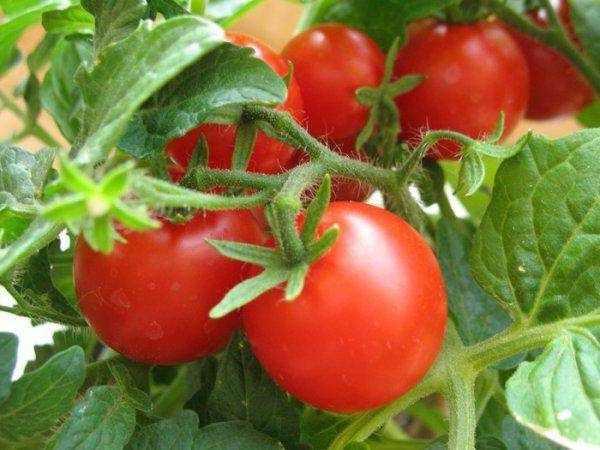







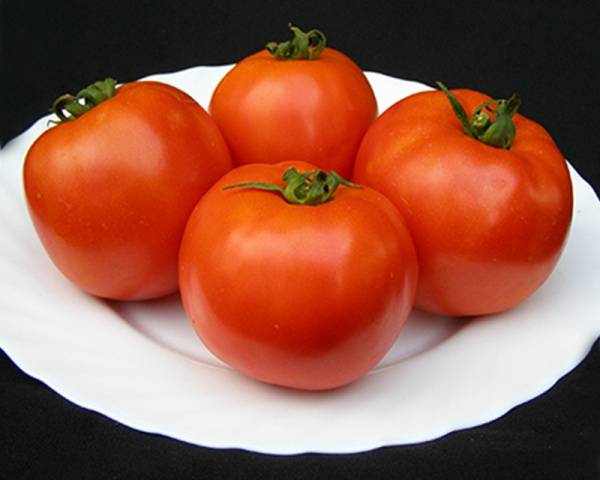




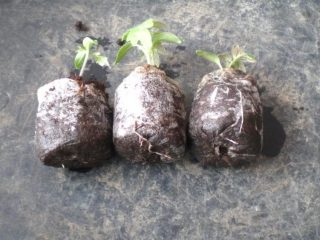
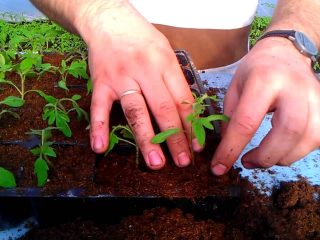
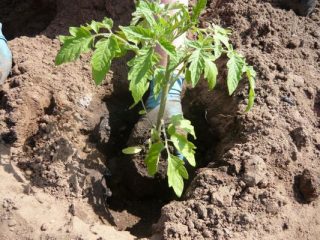

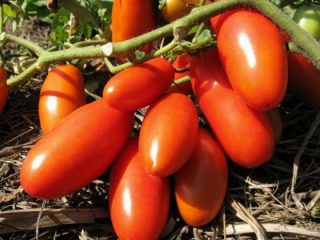

Tanya planted in 2019 in the greenhouse this year and did not find any seeds. The bush is compact, there are a lot of fruits and I had very large ones (not as in the description) 500-700 grams ripened on the bush, fleshy and sweet just super. maybe there was a mismatch. I want to find these seeds next year.